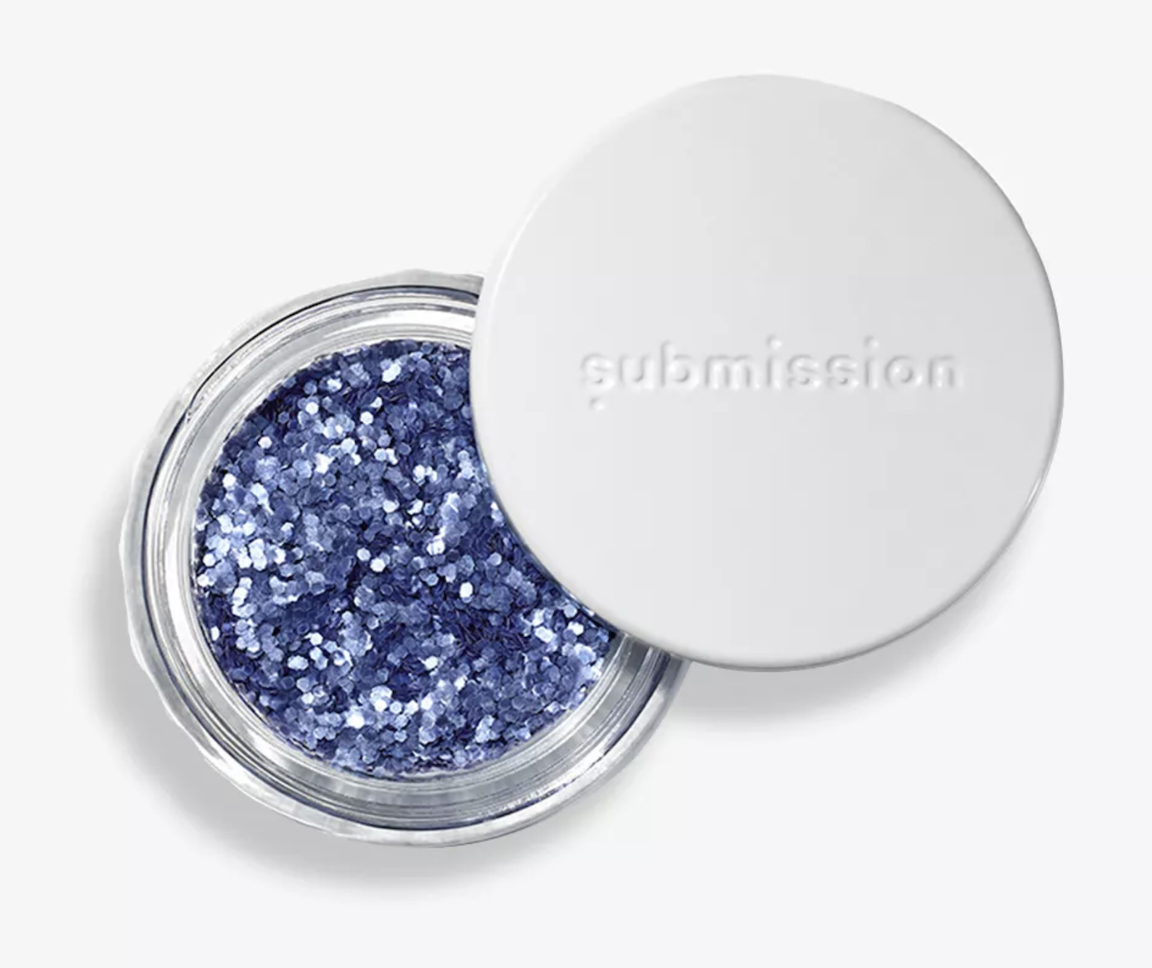With New Year’s Eve just around the corner, the excitement of making plans to ring in 2024 is inevitably on our minds. After all, there’s nothing like the prospect of new beginnings to give us something to look forward to — from the venue to the people we’ll hold close at midnight, the outfit, and of course the makeup! If you’re a person who favors the sparkly look of glitter to add pizzazz to your evening, you may be surprised to know those little flecks of joy are actually amajor contributor to microplastic pollution.
If you’ve never considered what glitter is made of, it’s generally composed of minute pieces of plastic that are coated with a reflective layer of color. Their miniscule size — often a fraction of a millimeter — allows them to spread far and wide, becoming a burden to our ecosystems. While the effects of such tiny particles may seem negligible, they collect in our soil, rivers and oceans. They are then ingested by fish, sea creatures, and land mammals, making their way into our food chain and creating harmful issues in humans (as well as in the animals, themselves). Research suggests microplastics can enter the bloodstream and respiratory tract when ingested or inhaled, causing disruption to our digestive, respiratory, endocrine, reproductive, and immune systems. In wildlife, glitter can cause a myriad of adverse effects on animals, including reproductive challenges, reduced feeding efficiency, and physical harm.
In October, a ban on glitter went into effect in the E.U. as part of a plan to address plastic pollution concerns. The plan – which outlines Europe’s aim to become the first climate-neutral continent by 2050 – hopes to reduce plastic pellet pollution by 74% by the end of the decade. The ban prohibits the sale of microplastics in consumer products and primarily restricts the use of loose plastic varieties — those widely used for cosmetic and crafting purposes. Glitter made from natural, water-soluble, or biodegradable materials is still okay. Here in the U.S., the FDA banned the use of microplastic beads in toothpaste, cleansers, and exfoliators in 2015 but stopped short of addressing glitter.
If you feel your NYE look won’t be complete without the signature sparkle that only glitter can provide, consider a more environmentally friendly option, and make sure to do your research. While many brands use biodegradable materials, some also continue to utilize aluminum film (which is not biodegradable) to produce the glitter’s shiny effect. German brand Projekt Glitter is one of thoseand claims while they do use aluminum, the metal comprises less than 0.1% of the product. Still, it’s worth considering what happens to the aluminum that’s left behind once the glitter enters our ecosystem.
Brands like Natural Earth Paint and Los Angeles-based Submission Beauty, however, are both plant-based and aluminum free — the latter also excludes antimony, a heavy metal often used as a catalyst in the production of plastic. Submission Beauty’s version is made from BioGlitter, which uses cellulose from eucalyptus trees to give the product a naturally iridescent effect. BioGlitter has received TÜV Austria’s “OK biodegradable WATER” certification, the highest level of independent certification for freshwater biodegradability in the world and has been developed to biodegrade quickly and safely in the natural environment. Submission Beauty’s glitter is also non-toxic, cruelty-free, allergen-free, and CMR-free — meaning that it doesn’t contain substances known to be carcinogenic, mutagenic, or toxic to reproduction.

So, whether it’s for New Year’s Eve or a memorable occasion into 2024, if you’re sussing out glitter options to complete the occasion, make sure to choose an eco-friendly alternative that makes you feel just as good as you look.
Header photo by Alexander Grey on Unsplash
Read more Style articles from Green Living.






